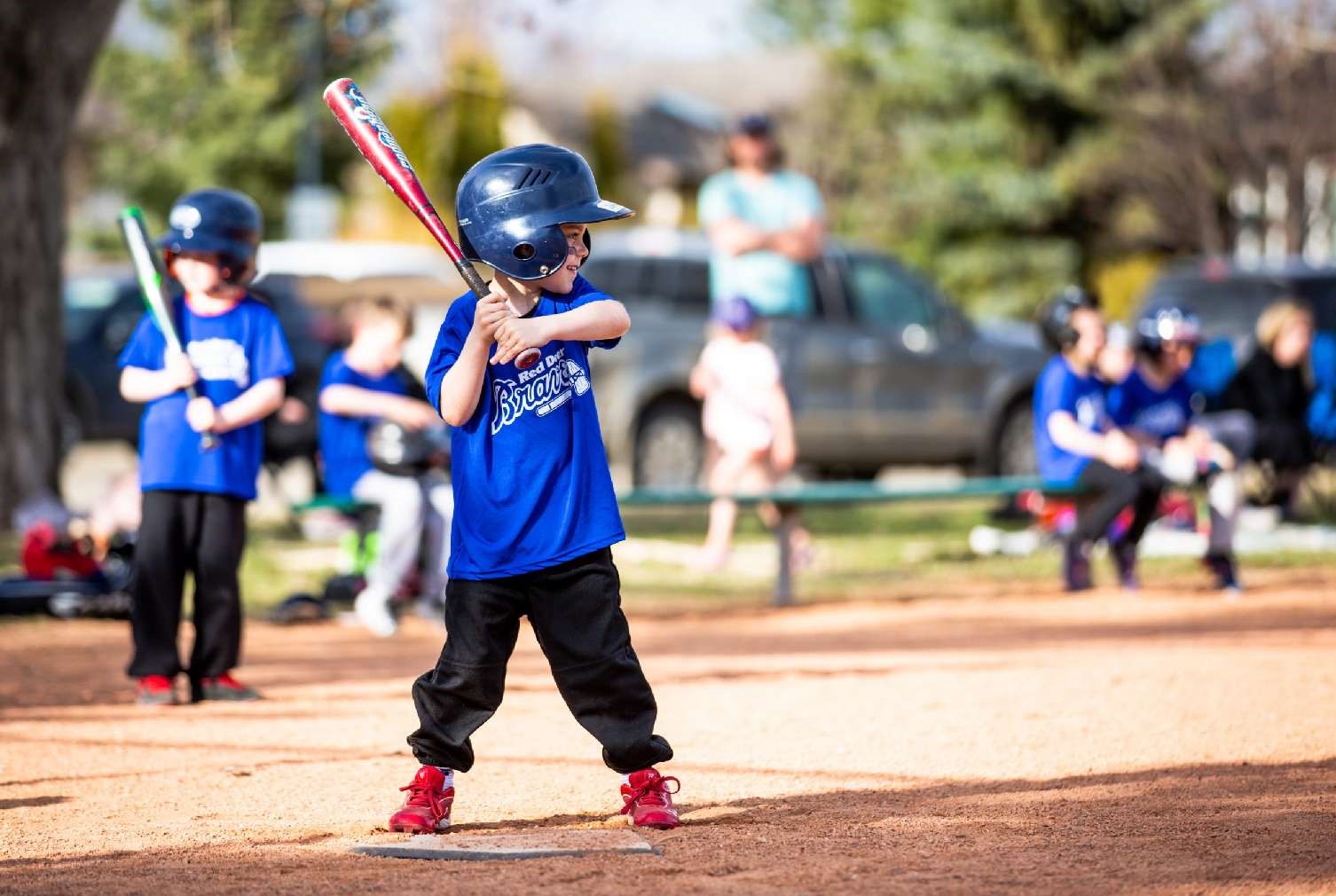Red Deer Minor Baseball innovates during pandemic

Why have only one baseball diamond when you could have four?
This was the question the Red Deer Minor Baseball Association (RDMBA) asked themselves as their board was working on further implementing Sport for Life’s Long-Term Development in Sport and Physical Activity framework into their organization. Following the concept of Kaizen, which means continuous improvement, they were looking for innovative ways to engage their players. One idea: by eliminating outfielders and bringing play down to a smaller scale with the use of adaptive diamonds, they believed they could transform the way their youngest athletes first experience the game.
“The goal was to have less players sitting on the bench, and hopefully decrease the amount of helicopter-watching going on in the outfield. Each player is then engaged and involved for the duration of the game,” said RDMBA general manager Renae Clark, who oversaw this same age group as they implemented Baseball Canada’s Rally Cap program just two years ago.
“These young players can lose focus quickly, if not engaged, and that results in dandelion-picking. Reaching each new skill level is exciting and gives these players something to strive for and work towards.”
The implementation of the new adaptive diamond concept was interrupted by the COVID-19 pandemic, but they believe they were successful in demonstrating to parents and players the benefits of this new idea. Last year they created a four-diamond structure at their year-end event for their 7U and 9U athletes, and felt confident to proceed with this concept when previously skeptical parents provided nothing but positive feedback afterwards. They now plan to incorporate the adaptive diamonds into their programming for spring 2021. And that’s only the beginning of how they’ve fine tuned their Long-Term Development pathway to benefit their athletes, a task made more difficult by the current pandemic.
“COVID-19 hit us hard just as it did everyone else. We were in the process of try-outs for our competitive teams, and as much as we would have liked to have seen those completed, our first concern was to protect our players, families, coaches and volunteers. It’s been extremely disappointing. The loss of a season can be devastating for all involved, but especially for our graduating players that would have been playing their final year in our association,” she said.
“It was eye-opening to lose that simple safety that we’ve come to take for granted.”
That being said, their coaches have hosted Zoom workouts for the players, available to anyone that wished to join. They’ve provided links to drill ideas for players to practice in their backyards with family or at the ball diamond, and they’ve also promoted instructional videos from Baseball Alberta and Baseball Canada that address everything from fundamentals to proper mechanics.
One area the executive has been focusing on is inclusion. RDMBA has put protocols in place to ensure disadvantaged children, and those with cognitive and physical disabilities have the opportunity to play baseball. They work with Kid Sport and JumpStart for funding and collect used equipment that can be distributed to families that can’t afford it. They’ve introduced payment plans and have even gone as far as allowing underprivileged children to participate free of charge. They are in the process of adopting the Challenger program from the City of Red Deer, which is a league created to support athletes with cognitive and mobility disabilities.
“RDMBA also believes strongly in mentorship and giving back to the association. Our 18U and 15U competitive teams attend some of our young division practices and work with those players on fundamentals. These older players are who our small athletes look up to and aspire to be, so when they arrive in full uniform, you would think some MLBers just took the field. It’s a wonderful, smile-filled experience for both the mentors and the mentees.”
Sport for Life CEO Richard Way has worked closely with RDMBA over the years, and regards the organization as an example within the industry of effective Long-Term Development implementation. With innovations like Rally Cap and the four-diamond structure, he believes more children will be retained and given the chance to be both successfully competitive and active for life.
“When I look at what they’ve accomplished in these past years, I really have to applaud the way RDMA has embraced a vision and stuck with it. They haven’t been afraid to innovate, to try new things, to take risks. Implementing a Long-Term Development strategy requires dedication, and foresight. I think this organization has both.”
*Photo courtesy of VMoore Photography

